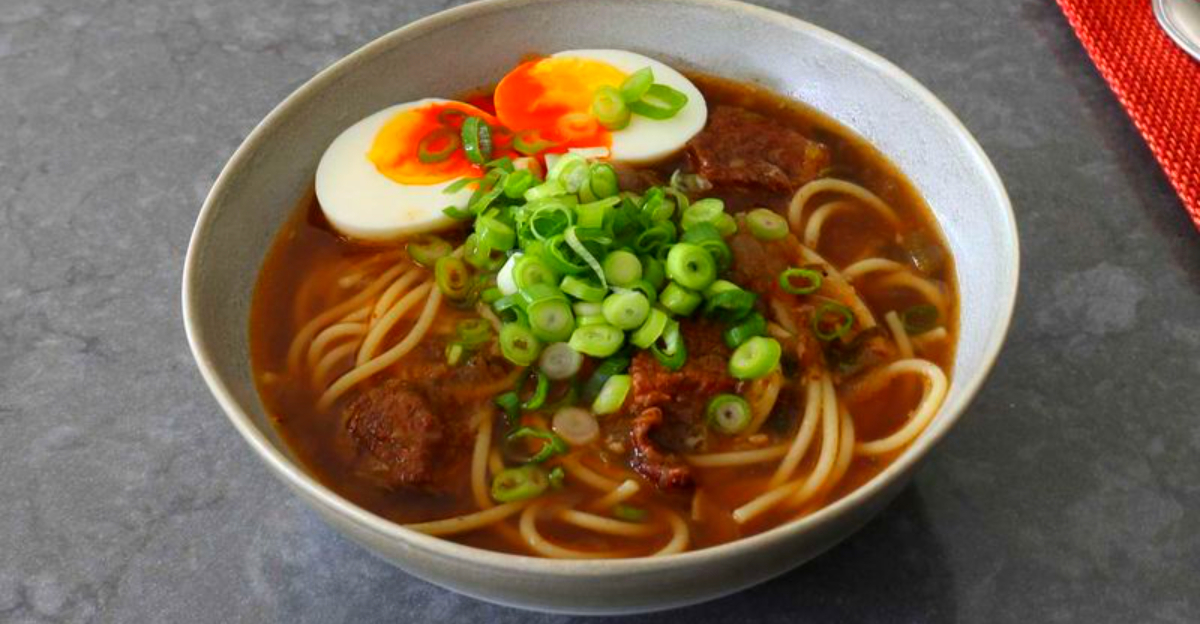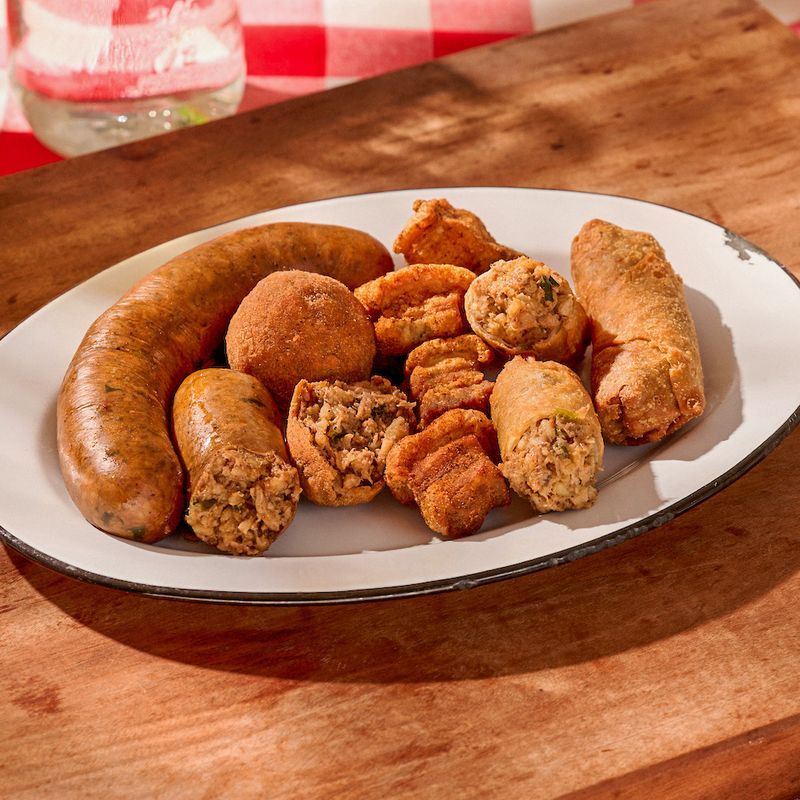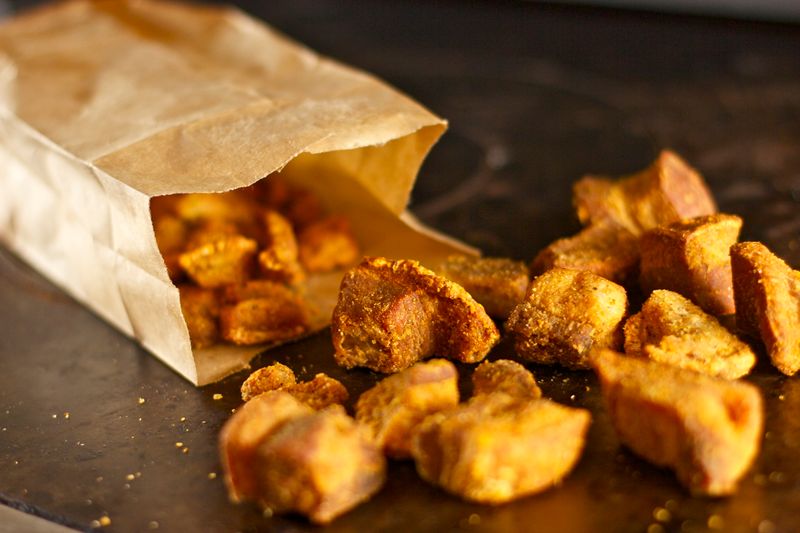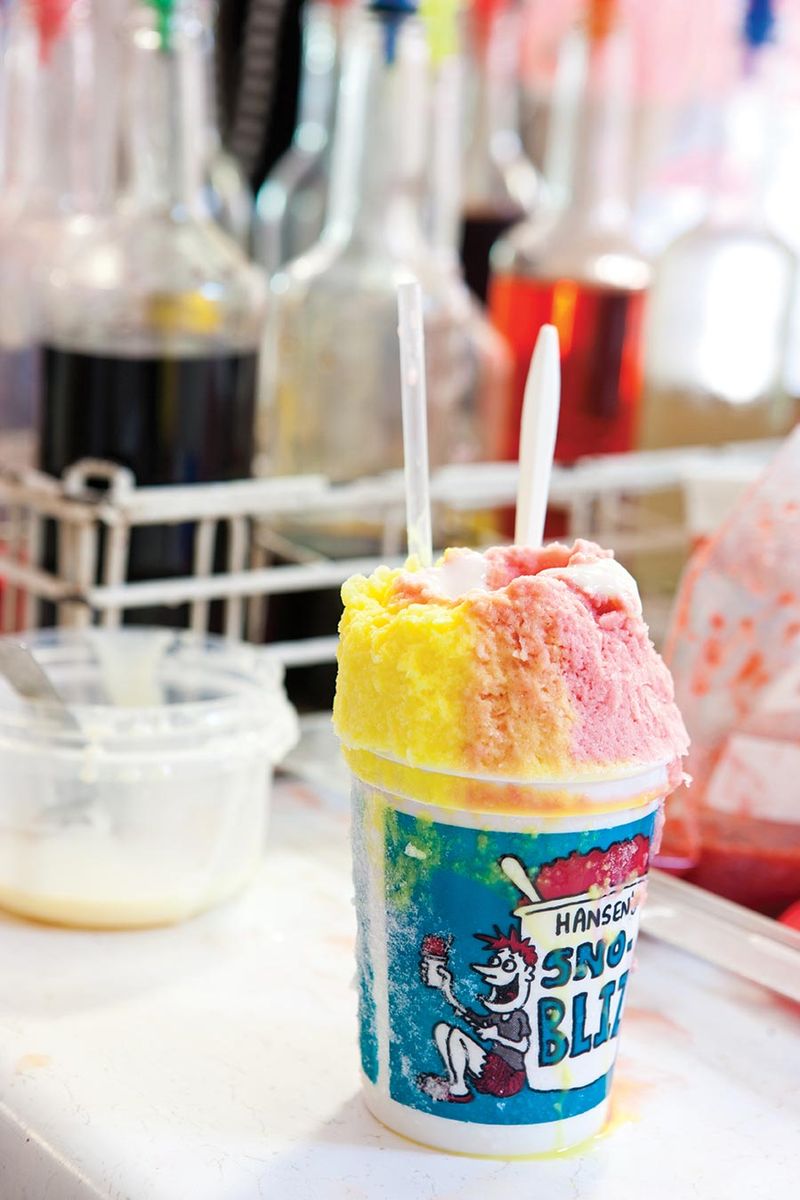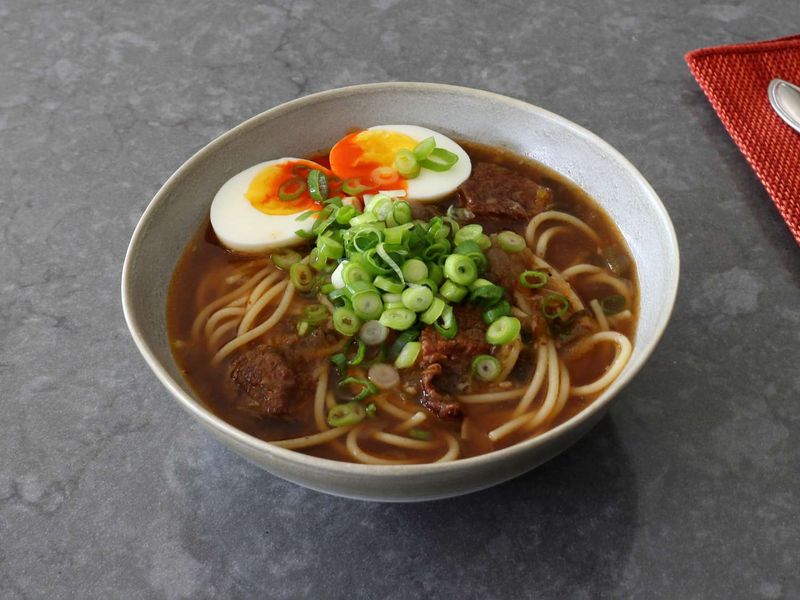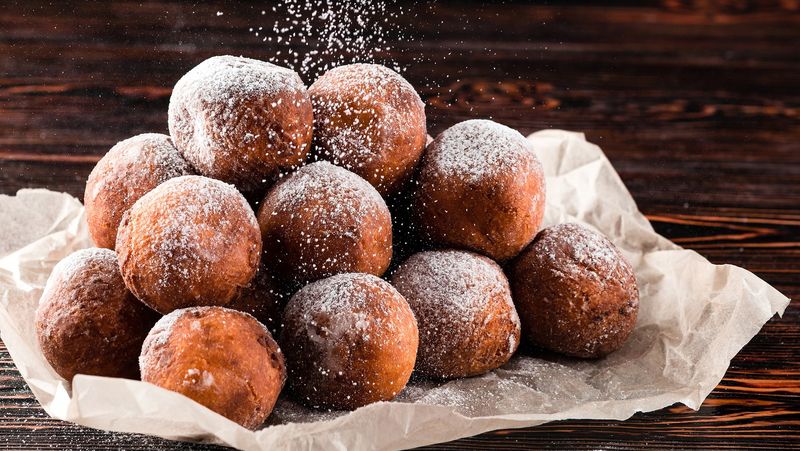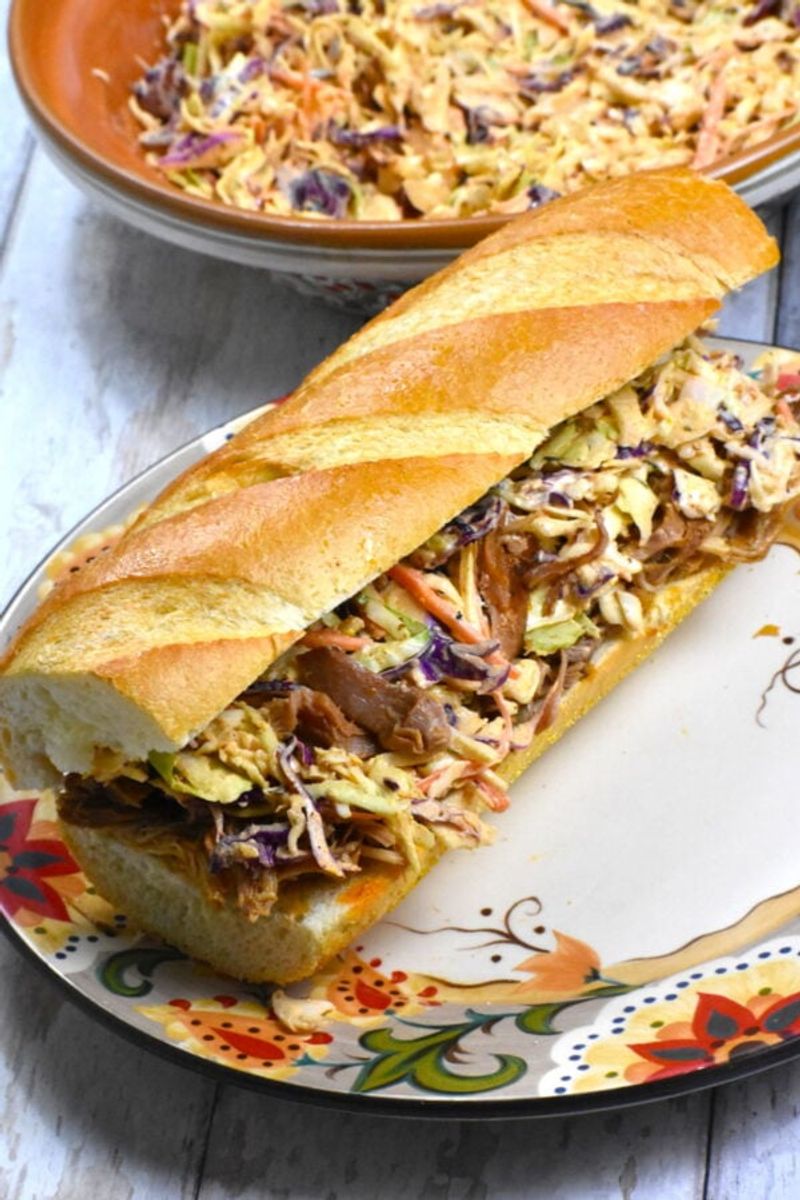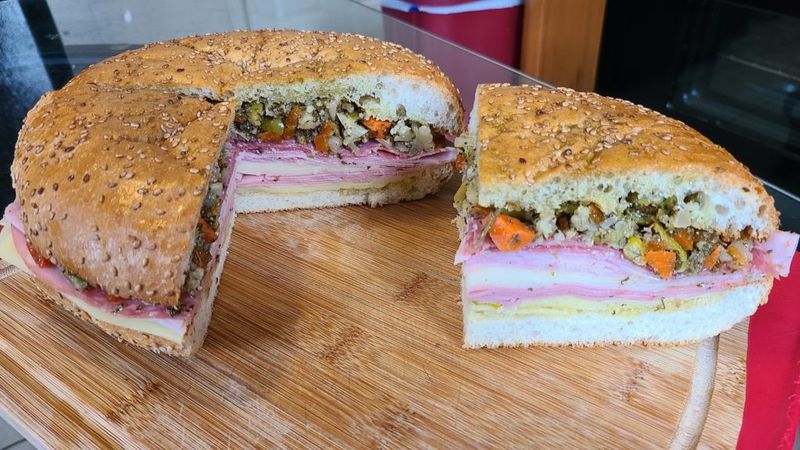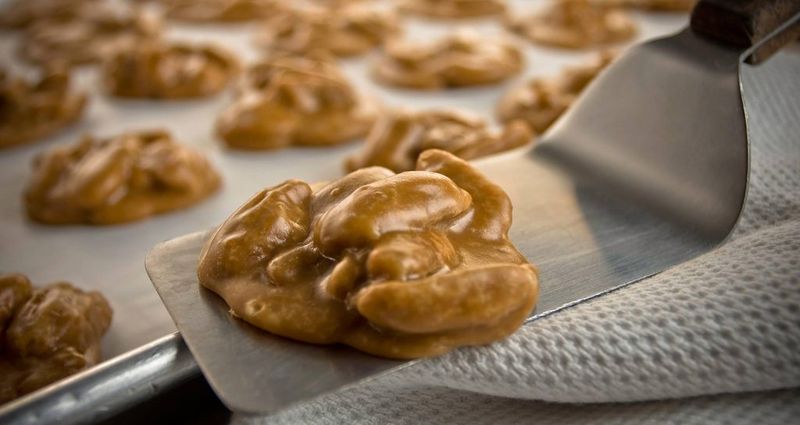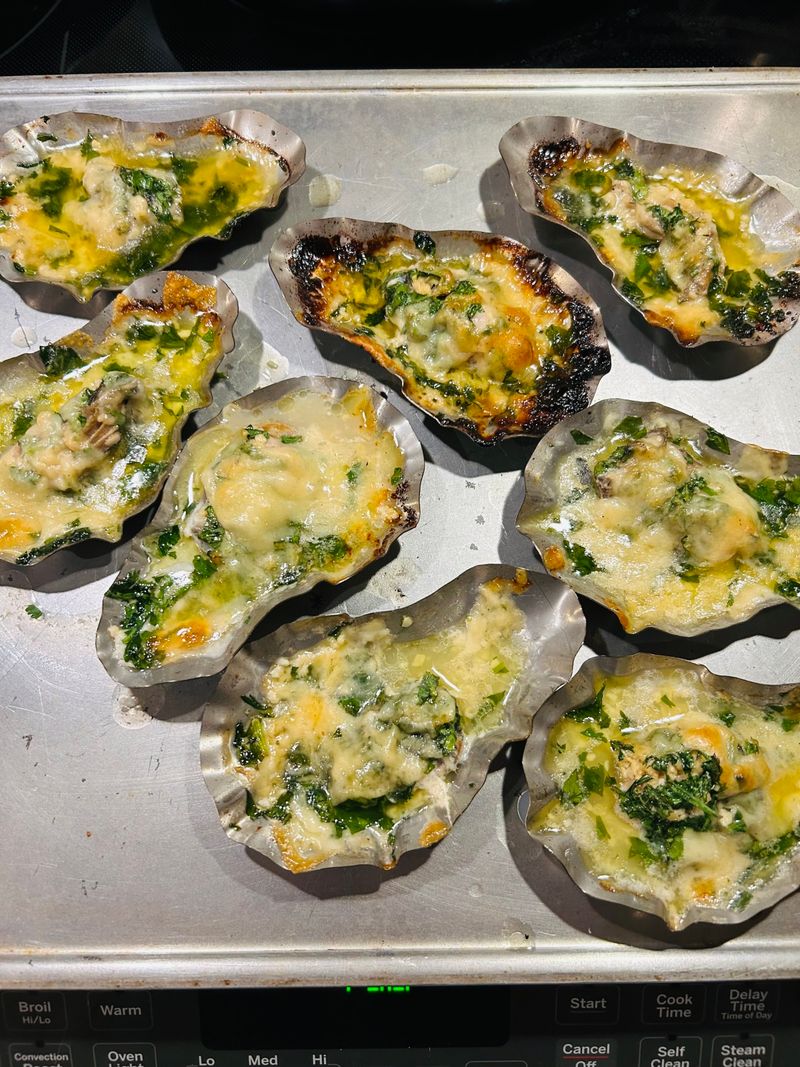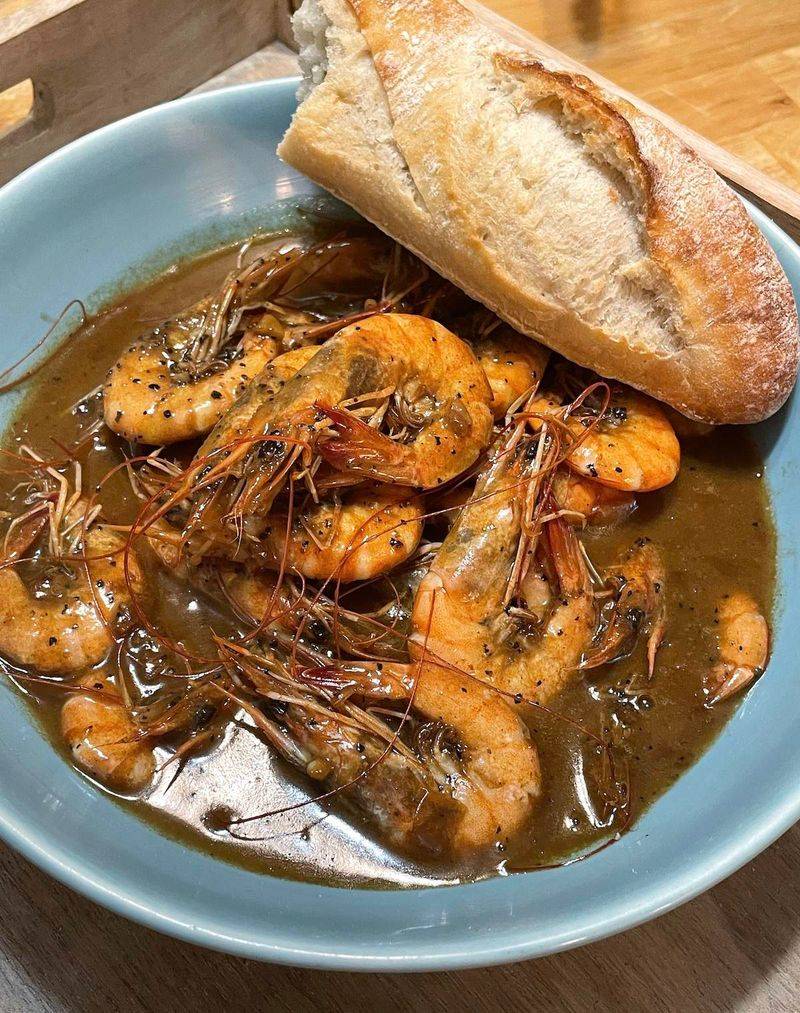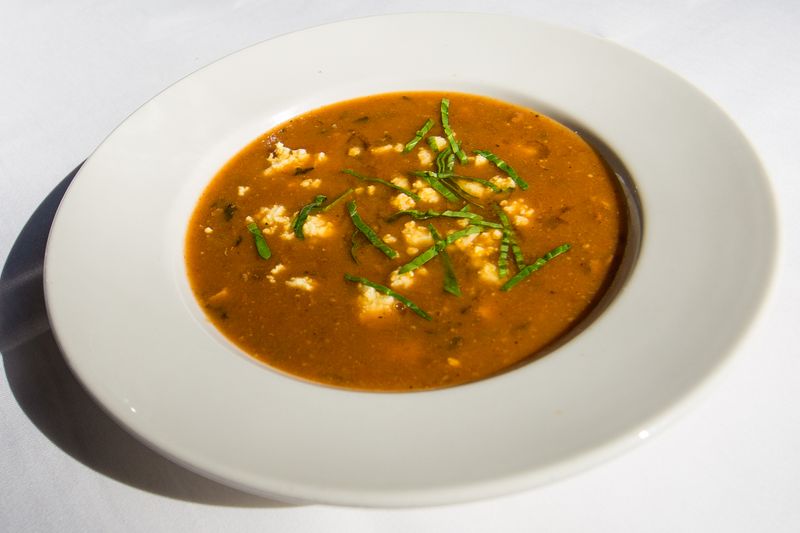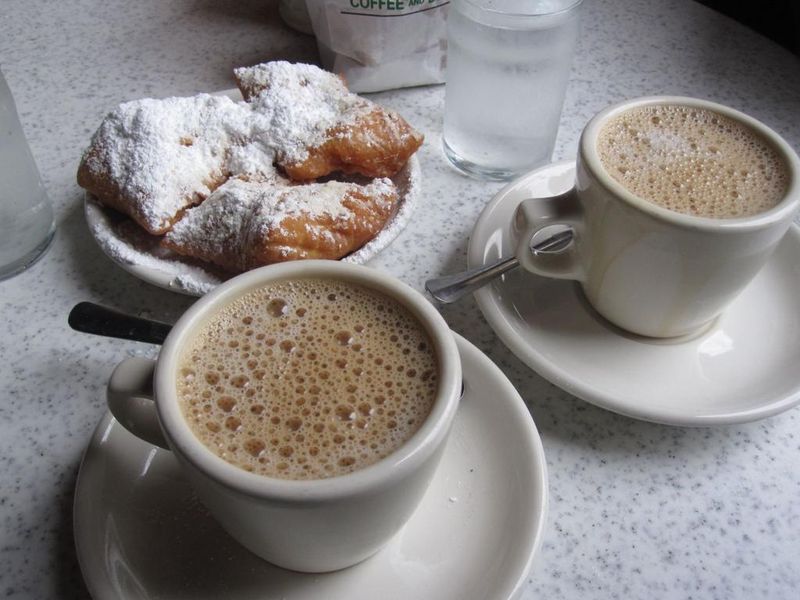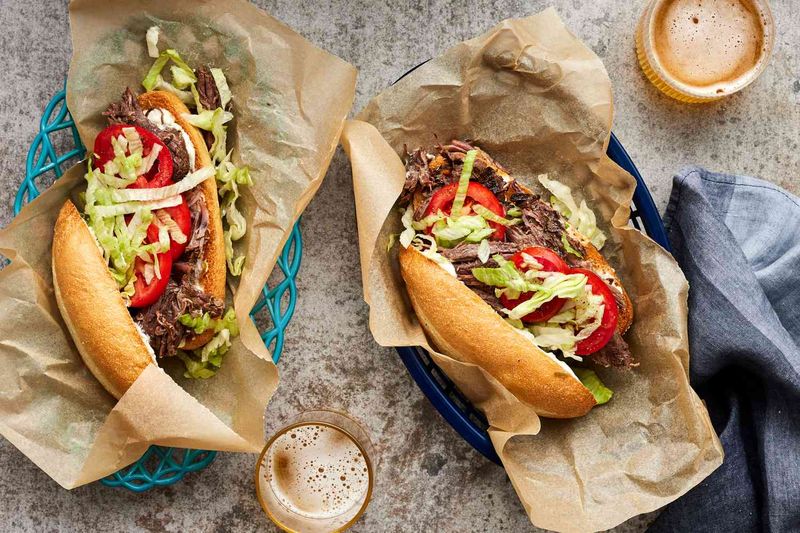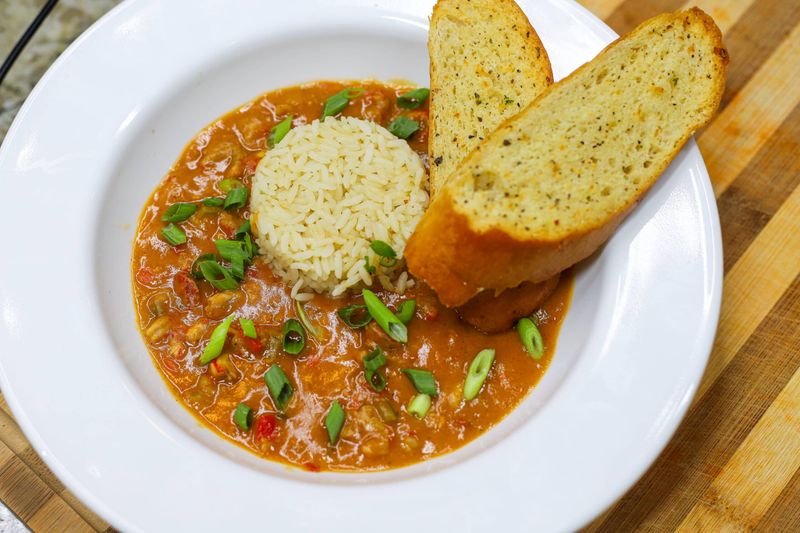Louisiana’s food scene stands as a monument to cultural fusion, history, and culinary genius. From gas station delicacies to fine dining institutions, these dishes represent generations of cooking wisdom and local ingredients that simply can’t be duplicated elsewhere. Whether it’s the water, the local seafood, or the secret techniques passed down through families, these 16 Louisiana classics demand a pilgrimage to taste them properly.
1. Cajun Boudin (and Boudin Balls)
Gas stations in Louisiana aren’t just for fuel—they’re treasure troves of authentic Cajun cuisine, especially when it comes to boudin. This steamed pork-and-rice sausage bursts with green onions and spices that dance on your tongue in a way no homemade version ever could.
The magic happens when local meat markets stuff their secret family recipes into casings each morning. Some places even transform the filling into crispy fried boudin balls—perfect handheld bites of Cajun tradition.
Billy’s Boudin in Scott, Louisiana (the official Boudin Capital) serves theirs steaming hot in paper bags, ready to be squeezed directly from the casing into your mouth—the authentic Cajun way.
2. Cracklins (Gratons)
Forget those airy pork rinds from grocery stores—real Louisiana cracklins will ruin you for anything else. These triple-threat treasures feature skin, fat, and meat fried together until the texture reaches a perfect symphony of crunch.
Country stores throughout Cajun country sell them by the pound in greasy paper bags. The cracklins release their flavor in stages: first the shattering crispness of the skin, then the melting richness of the fat, finally the savory chew of the meat.
Old-timers judge cracklins by their sound—the louder the crunch, the better they’re cooked. Many Cajun families still make them during traditional boucheries, where nothing from the pig goes to waste.
3. New Orleans Sno-Balls
Summer in New Orleans without a sno-ball is like Mardi Gras without beads—unthinkable. Unlike crunchy snow cones found elsewhere, the Crescent City’s version features impossibly fluffy ice shaved so fine it absorbs flavored syrups rather than letting them pool at the bottom.
Neighborhood stands use specialized machines that produce this cloud-like texture. The most beloved versions come “stuffed” with soft-serve ice cream or crowned with condensed milk that creates sweet rivulets through the flavored ice.
Hansen’s Sno-Bliz, operating since 1939, still uses their founder’s patented machine and handmade syrups. During sweltering August days, the line stretches around the block—and locals will tell you it’s worth every minute of waiting.
4. Yakamein (“Old Sober”)
Found in corner stores and at second lines throughout New Orleans, yakamein represents the city’s multicultural history in a single bowl. This Creole-Chinese fusion combines beef broth, spaghetti noodles, green onions, and half a boiled egg—a combination that sounds odd until your first spoonful.
Affectionately nicknamed “Old Sober,” this soul-warming soup has saved countless revelers from morning-after misery. The broth carries hints of soy sauce and Creole seasoning, creating a flavor profile you won’t find anywhere else.
Ms. Linda Green, known as the “Yakamein Lady,” helped preserve this tradition when it nearly disappeared. Her version, sold at festivals and from her food truck, remains the gold standard for this uniquely New Orleans remedy.
5. Calas (Creole Rice Fritters)
Before beignets dominated New Orleans breakfast tables, there were calas—puffy, yeasted rice fritters dusted with powdered sugar and served piping hot. African American women once walked the French Quarter streets at dawn, carrying baskets of these golden treats, calling out “Belles calas! Tout chauds!” (Beautiful calas! Very hot!)
Made from leftover rice, these fritters helped formerly enslaved women earn money toward their freedom. The batter ferments overnight, creating a subtle tanginess that balances the sweetness.
While nearly forgotten for decades, calas have experienced a revival in recent years. Paired with café au lait, they offer a taste of Creole history that home kitchens can’t recreate without generations of know-how.
6. Maque Choux
Long before fusion cuisine became trendy, Native Americans and Creole cooks were creating maque choux—a vibrant corn dish that showcases Louisiana’s talent for cultural blending. Fresh corn kernels are slowly simmered with the trinity of bell peppers, onions, and sometimes tomatoes until they surrender their milky sweetness.
The name itself reflects Louisiana’s multicultural heritage, with roots in both French and Choctaw languages. Home cooks throughout the state guard their family variations jealously, some adding okra for thickness, others incorporating crawfish tails or Tasso ham for extra flavor.
Summer gatherings across Louisiana feature this colorful side dish. The magic happens when fresh-picked corn meets cast iron and generations of cooking instinct—something that simply can’t be bottled or boxed.
7. Cochon de Lait (and the Cochon de Lait Po’ Boy)
Smoke rises before dawn in Cajun country when a cochon de lait begins. This celebration centerpiece—a whole young pig slow-roasted over hardwood—represents community cooking at its finest. The meat emerges fall-apart tender with crackling skin that shatters between your teeth.
Festivals throughout Louisiana honor this tradition, with the annual Cochon de Lait Festival in Mansura drawing thousands. The technique requires multiple people managing the fire through the night, telling stories and passing down traditions as the pig slowly transforms.
At Jazz Fest, the cochon de lait po’boy—stuffed with thinly sliced pork and dressed with slaw—creates block-long lines. The sandwich combines the smoky meat with crisp cabbage and creamy sauce on New Orleans French bread that can’t be duplicated elsewhere.
8. The Muffuletta
When Sicilian immigrants crafted the muffuletta in New Orleans’ French Quarter, they created an edible monument to the city’s immigrant history. Central Grocery’s 1906 creation features a seeded loaf the size of a dinner plate, layered with a marinated olive salad that soaks into the bread.
Beneath this tangy, garlicky spread lies a carefully arranged architecture of Italian meats and cheeses. The sandwich improves as it sits, allowing the olive oil to penetrate the bread and meats—making it impossible to replicate at home without the specific bread and olive mix.
After surviving Hurricane Ida’s damage, Central Grocery reopened to lines of grateful locals and visitors. Their muffuletta remains the standard against which all others are judged—a sandwich so substantial it’s sold by the quarter.
9. Creole Pralines
Praline ladies once graced New Orleans streets, selling these pecan-studded confections from baskets balanced on their heads. These weren’t just candy sellers—they were entrepreneurs preserving African and Creole culinary traditions while creating economic independence.
The perfect praline shatters then melts on your tongue, releasing waves of caramelized sugar, vanilla, and toasted pecans. Despite seeming simple, pralines demand precise timing, humidity awareness, and a sixth sense for sugar crystallization that comes only with experience.
Loretta’s Authentic Pralines in the French Market continues this sweet legacy. Their confections still follow recipes passed through generations of Creole families—sweet reminders of the women who helped build New Orleans’ culinary fame through resourcefulness and skill.
10. King Cake (Carnival-Only Classic)
The moment Twelfth Night arrives, purple, green, and gold king cakes appear throughout Louisiana, marking the beginning of Carnival season. This ringed brioche, decorated in Mardi Gras colors, isn’t just dessert—it’s a social contract among friends, family, and coworkers.
Hidden inside each cake lurks a tiny plastic baby. The finder becomes “king for a day” but also shoulders the responsibility of providing the next cake, creating an endless cycle of gatherings throughout the season.
Bakeries like Randazzo’s and Dong Phuong have waiting lines stretching around the block during peak season. Each bakery guards its dough formula and filling recipes jealously, creating loyal followings that debate superiority with religious fervor until Ash Wednesday ends the delicious debate.
11. Charbroiled Oysters
Bubbling butter, sizzling garlic, and melting cheese cascade over fresh Gulf oysters on an open flame—a spectacle for all senses that originated at Drago’s in Metairie. The smell alone draws crowds before the first bite even touches your lips.
Raw oyster skeptics find their gateway through this smoky, savory preparation. The oysters remain juicy inside while the edges caramelize and crisp under the broiler’s intense heat.
The secret lies in the combination of local oysters harvested that morning, clarified butter infused with precise amounts of garlic and herbs, and the restaurant’s seasoned grill that holds decades of flavor memory. Home cooks attempting this dish discover that without Gulf oysters and equipment that’s seen thousands of previous servings, something essential is missing.
12. New Orleans–Style Barbecue Shrimp
Nothing about New Orleans barbecue shrimp involves a grill or barbecue sauce, yet this misnamed marvel ranks among the city’s most beloved dishes. Born at Pascal’s Manale in the 1950s, these jumbo Gulf shrimp swim in a butter-forward sauce deepened with Worcestershire sauce, cracked black pepper, and Creole seasoning.
Served head-on with shells intact, eating these shrimp becomes a gloriously messy affair. Crusty French bread is non-negotiable—it’s the essential tool for sopping up the rich sauce that pools on your plate.
The dish’s success depends entirely on fresh Gulf shrimp with their distinctive sweetness and mineral notes. Home attempts fall short without access to shrimp pulled from Gulf waters that morning and the decades-old seasoned pans that hold the memories of thousands of previous batches.
13. Turtle Soup au Sherry
Commander’s Palace has served this luxurious soup since 1893, making it a living museum piece of Creole culinary history. Dark and mysterious as a Louisiana bayou, turtle soup represents old-world sophistication with New Orleans flair.
The base begins with a roux the color of dark chocolate, then builds complexity through hours of simmering with turtle meat, the holy trinity of vegetables, and a blend of spices guarded like state secrets. Tableside, servers add the finishing touch—a splash of aged sherry that blooms through the soup with aromatic intensity.
Modern versions typically use snapping turtle meat, which provides a distinctive flavor somewhere between chicken, veal, and fish. The depth of flavor develops through techniques passed from chef to chef across generations—impossible to capture in written recipes.
14. Chicory Café au Lait
Born from necessity during Civil War blockades when coffee became scarce, chicory-blended coffee evolved into a beloved New Orleans tradition. The roasted chicory root adds depth without bitterness, creating a distinctive flavor profile that pairs perfectly with steamed milk in café au lait.
Café du Monde serves this classic 24 hours a day beneath their iconic green and white awning. Their version comes in thick white mugs alongside powdered sugar-covered beignets—a combination that has remained unchanged for generations.
The chicory tradition reveals New Orleanians’ talent for transforming hardship into pleasure. Modern attempts to recreate this experience at home miss crucial elements—the humidity that affects the coffee’s extraction, the specific mineral content of Mississippi River water, and the atmosphere of brass bands playing in Jackson Square just steps away.
15. Debris Roast Beef Po’ Boy
“Dressed” is the magic word when ordering this iconic sandwich at Mother’s Restaurant or other New Orleans institutions. The term refers to the standard additions of lettuce, tomatoes, pickles, and mayo, but the star remains the debris—those glorious bits of beef that fall into the gravy during hours of slow roasting.
Unlike ordinary roast beef sandwiches, debris features shreds and chunks of meat that have absorbed the intensely flavored gravy. The beef practically melts on your tongue, creating a beautiful mess that soaks into airy French bread with a crisp crust that shatters just right.
Local bakeries deliver fresh bread multiple times daily, ensuring that perfect texture combination of crisp exterior and cloud-like interior. This bread, made with New Orleans water and adapted to the city’s humidity, simply cannot be duplicated elsewhere.
16. Crawfish Étouffée
Cajun grandmothers in the Breaux Bridge area created this copper-colored masterpiece of smothered crawfish tails. The name “étouffée” comes from the French word for “smothered,” describing how the sweet crawfish meat gently cooks in a roux-based sauce that balances richness with subtle heat.
Spring in Louisiana means crawfish season, when families gather around newspaper-covered tables for boils. Étouffée transforms leftover peeled tails into something entirely new and magical.
The dish requires patience—developing a proper roux takes time and attention. Local crawfish, harvested from Louisiana rice fields and backwater swamps, have a sweetness that imported varieties simply lack. Served over locally grown rice, étouffée embodies the Cajun philosophy of using what’s available to create extraordinary flavor.
